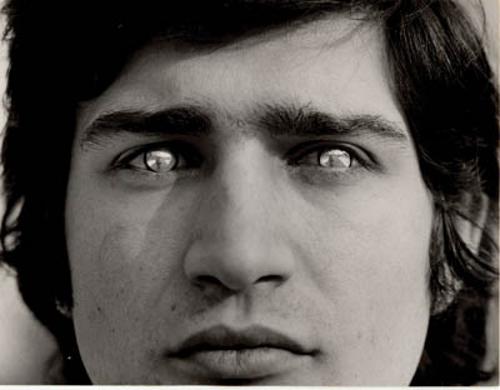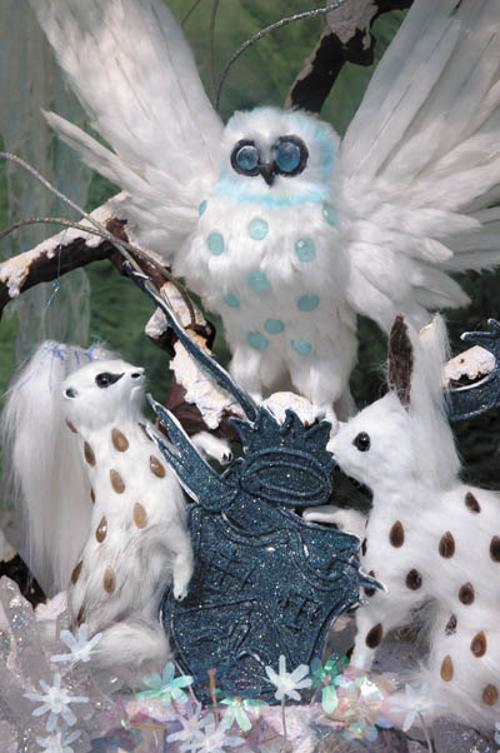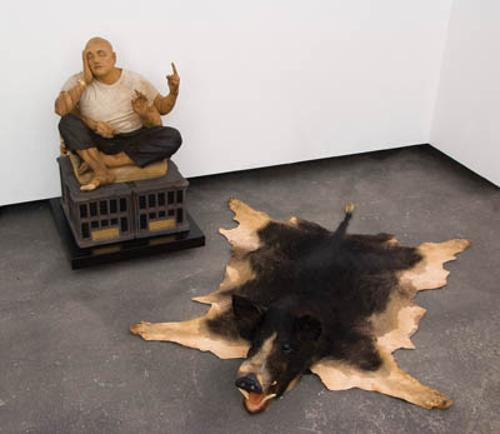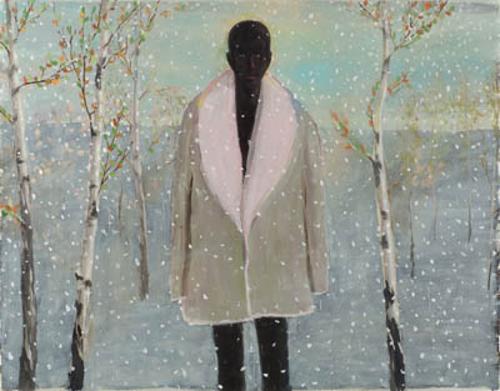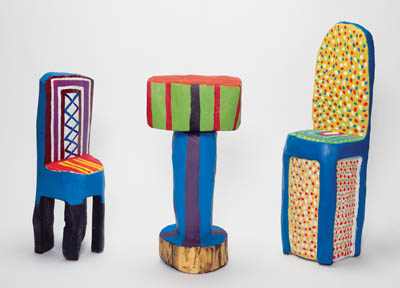
Walking through the 'old' Queensland Art Gallery, I felt a chill. Only an occasional attendant seemed to lurk in the shadows, always around corners as in Castle Wolfenstein, and the Sidney Nolan pictures looked somehow brooding and tragic. Adorno was right, I thought, this is where pictures come to die. I mused about happier times when these rooms hosted anarchic contemporary festivities, such as the Balance 1990 show and the first Asia Pacific Triennial in 1993, and hurried into the sunshine of the courtyard leading to GoMA.
At GoMA, patrons browsed the merchandising and waited to buy tickets to Picasso and his collection. From mausoleum to the marketplace, I thought, but where is the living culture? Picasso died in 1973. In GoMA's small gallery 3.1 you can find this year's Xstrata Emerging Indigenous Art Award. Here, at last, are living artists. But several questions arise: three of the nine artists are from the Northern Territory, four from West Australia, one from South Australia, and only one from Queensland. At last census, Queensland had more Aboriginal people than all these other states together (as does NSW, which didn't feature this year at all). In addition, six of the nine artists come from remote communities, although 52 percent of all Aboriginal people now live in either the major cities or nearby. Five of the nine 'emerging' artists are over 54 years of age, the oldest being 98! This is undoubtedly symptomatic of the 'Ooga-Booga' mentality that finds comfort in framing Aboriginality in a mystical dreamtime. Were it not for the concurrent Gordon Bennett retrospective I would wonder whether GoMA is less about contemporaneity and more about embalming artworks in readiness for the aesthetic crypt next door.
Moreover, all of these artists are already represented by major commercial galleries; some have won major prizes and are exhibited overseas. One has already reached the auction market. Are commercial dealers doing the gallery's homework?
OK, what about the artwork? Is it genuinely innovative? Is it relevant? Well, yes. Loongkoonan, of the West Kimberley region, aged 98, saw the whole saga of European appropriation of her country. Her work preserves, in more permanent commodifiable form, the group's history and heritage, the location of sacred sites, food sources, and waterholes through creation stories. However, there is undoubtedly an innovation in this translation. Her wavy vertical patterns of dots defy the description of their effect. Applied in several layers, the dots and lines achieve an uncanny illusion of feathery three-dimensional forms. Although she lives and works on the coast at Derby, they are reminiscent of traditional desert 'sand paintings' that use thick mulched plant fibres and coloured earth like papier-mâché in essentially sculptural concentric circles. Like Loongkoonan, Patsy Marfura translates sculptural form into two dimensions. In her works the intricate weave of indigenous woven baskets becomes a dense pattern of paint.
A three-dimensional concern likewise characterises the work of this year's winner Gunybi Ganmbar, from Yirrkala in North-East Arnhemland, who wonderfully brings relief carving to bark painting, but is already represented in the collections of the National Gallery of Australia and the South Australian Museum, hardly an emerging artist. Milly Kelly, from the East Pilbara region on the other hand, although 78, started interpreting her personal stories in bold pastel colours only in 2007. Josie Kunoth Petyarre and Dinni Kunnoth Kemarre adapt tree carving to chunky brightly-painted sculptures of 'contemporary innovations' such as a table, chairs and a police wagon. Daniel Walbidi's work registers the reality of climate change.
Beaver Lennon, Glenn Pilkington and Archie Moore are probably the closest to being conventional emerging artists. Lennon paints earnest portraits and landscapes of his country with Pro Hart-like trees. Pilkington uses a mobile phone to take photographs which he duplicates, and manipulates digitally. A simple grate for example becomes a tower of prison cells. Moore submits a series of Bibles, in one of which a page of Deuteronomy commanding 'Sign no treaties with the heathens. Show them no mercy. Kill them all, smash their altars, chop down their sacred trees' is cut and folded into a model of a church. These last two artists are the least embalmable, maybe that is why their category is least represented.

